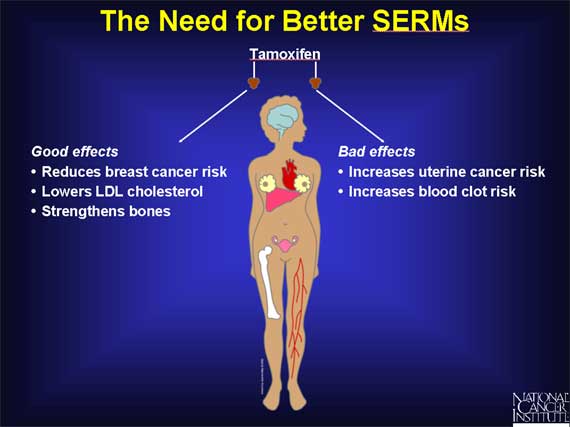|
The fact that tamoxifen blocks the action of estrogen in breast tissue while mimicking the action of estrogen in the uterus means that it functions as a SERM, selectively blocking or stimulating the estrogen receptors of different target tissues.
In addition to acting like estrogen in the uterus, tamoxifen resembles estrogen in its ability to lower LDL cholesterol levels. And in postmenopausal women, tamoxifen also resembles estrogen in its ability to preserve or increase bone density. Thus, aside from its tendency to increase the risk of uterine cancer, tamoxifen has a number of potentially beneficial properties.
As a result, scientists have been actively working on the development of other SERMs that might exhibit some of the beneficial properties of tamoxifen without sharing its potentially harmful effects.

< Previous | Index | Next Slide > |